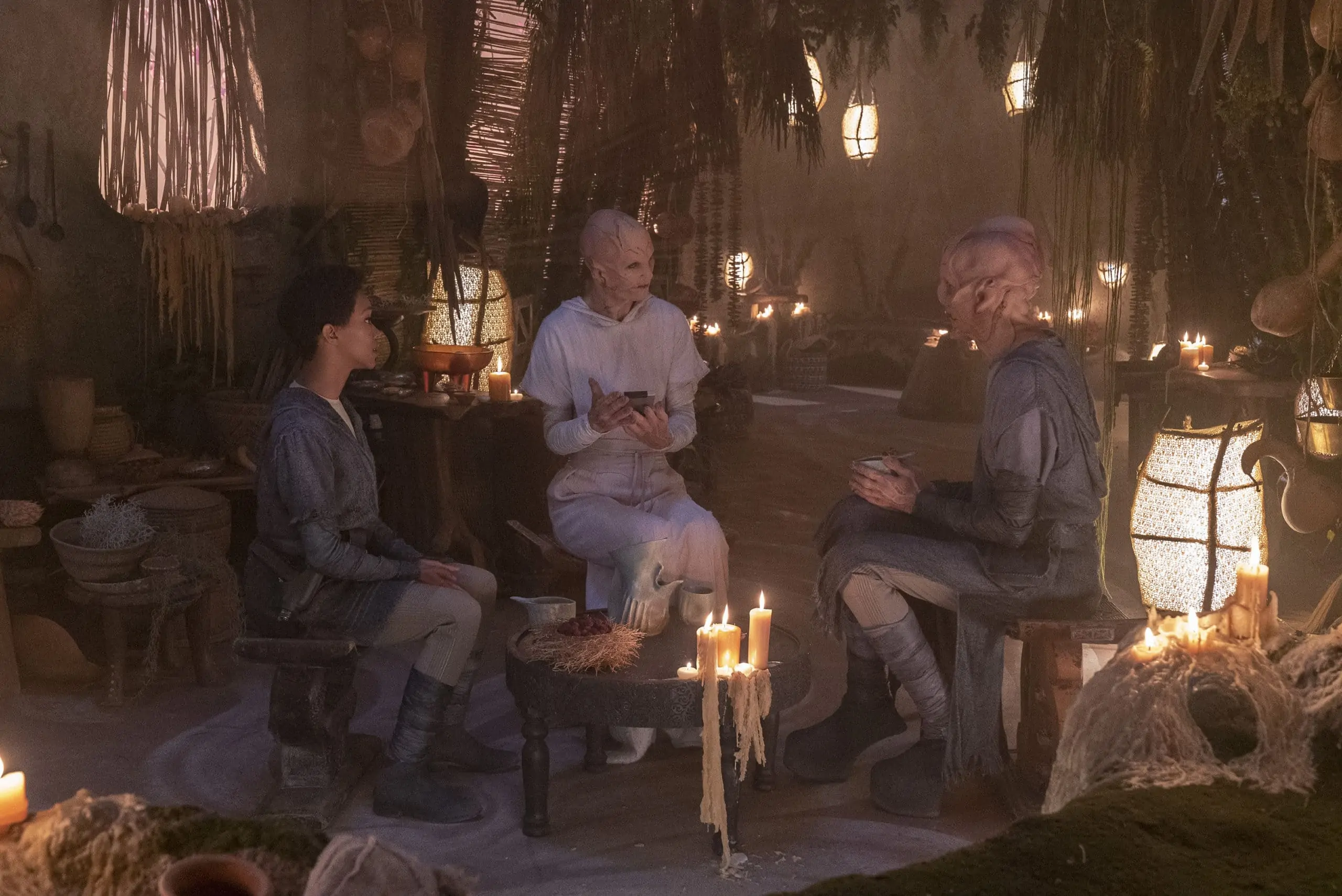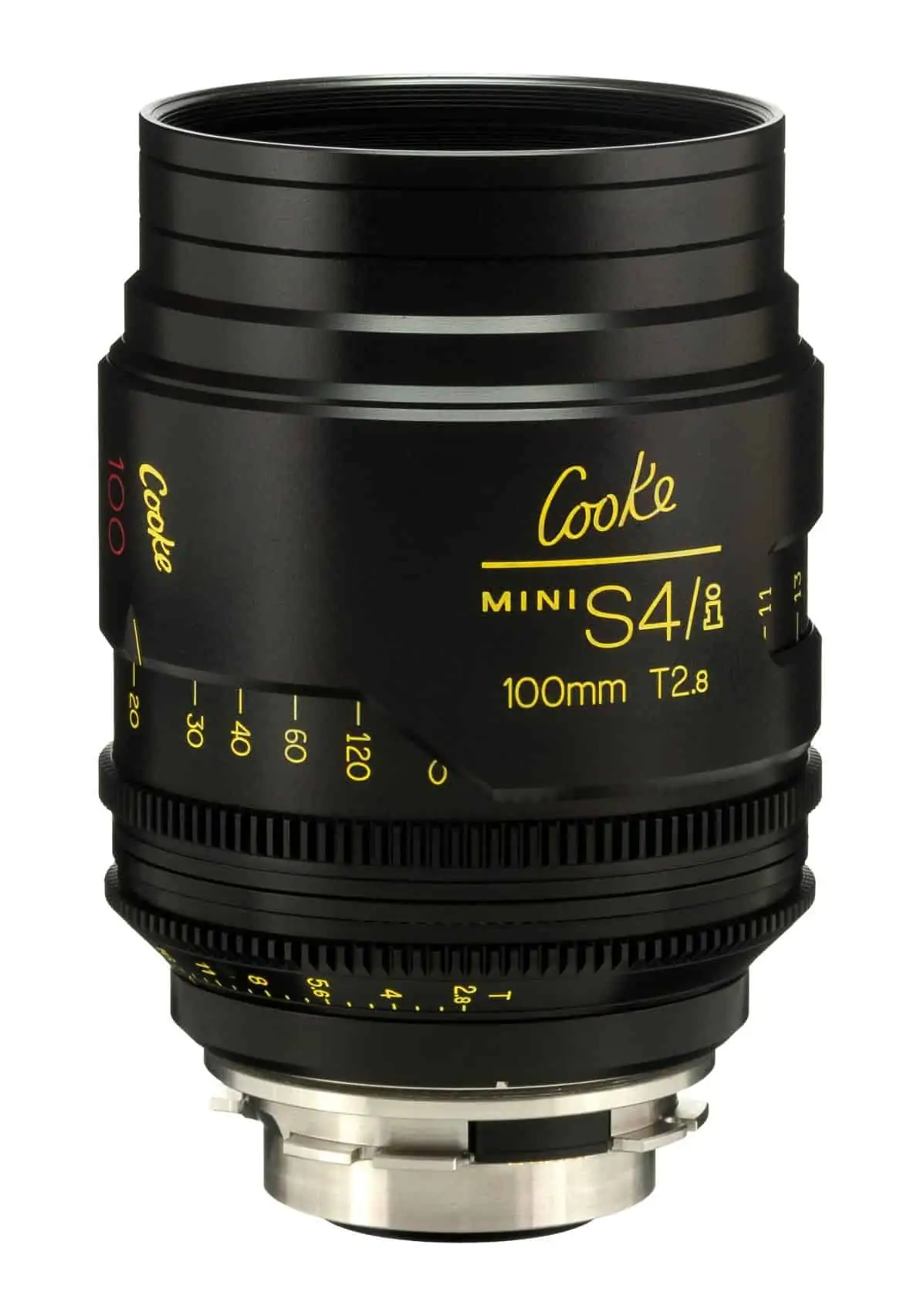Cooke Optics lenses enhance storytelling on Star Trek: Discovery S4
Nov 17, 2021

Season 4 of Star Trek: Discovery will bring viewers further into the story than previous seasons, as lead DP Philip Lanyon adds shooting in full frame to his creative look with Cooke Optics (1.8x) Anamorphic/i Full Frame Plus SF (Special Flare) prime lenses, to supplement the (2x) Anamorphic/i SF lenses that have been used since Season 2. Although each lens range has a different de-squeeze factor, they can be cut together seamlessly.
“I have a history with the Star Trek franchise and the Cooke Anamorphic/i 2x with the Special Flare coating from when I shot an episode of Discovery during Season 2,” said Lanyon. “I then went on to be the lead director of photography for Star Trek: Picard with the Cooke Anamorphic/i Special Flare lenses. I love the Special Flare. They really give me a visual playground in which to convey different emotions through light, colour, and composition, which is perfect for both Picard and Discovery. We are in so many interesting and unique environments, with strong lighting sources that interact organically with the glass. When a ship is near a star, or there are space gases or an alien planet, each present a unique flare that gives the environment an authenticity or feeling of being there. Plus, they give me the control to bring in more flare or take flare away just with a simple lighting change. That adds a lot to the Star Trek universe.”

For the 13 episodes of Star Trek: Discovery Season 4, co-DP’ed with Franco Tata and Chris Mably, Lanyon wanted to shoot in both Super 35 style with the Anamorphic/i 2x SF, and also add full frame format with the Anamorphic/i Full Frame Plus SF. “Full frame has some distinct advantages, along with a cleaner image — it allows me to get closer to the subject with a wider field of view without the distortion of a wide-angle lens,” he said. “That allows viewers to feel more of the relationship between the subject and their environment in a close up — not only who or what they are, but where they are.”
Lanyon was the driving force behind using full frame for Discovery, although the decision to introduce full frame was also somewhat technically driven. “Discovery used virtual production environments in Season 4 and the large format can effectively give you softer backgrounds, which was important to control moiré and other artefacts you can get on a LED wall, but shooting in full frame is what I wanted for the look and feel of Season 4,” he said.

While Discovery was the first Star Trek series to adopt the full frame format, it wouldn’t be alone for long. Star Trek: Strange New Worlds, slated for release in 2022, also went with Cooke Anamorphic/i Full Frame Plus SF (as well as Anamorphic/i SF) independently of what Lanyon was doing on Discovery. “A mentor of mine, Glen Keenan, who shot Season 2 and 3 of Discovery [lead DP of Strange New Worlds] was testing on the larger format at the same time that I was. It was coincidental, but it shows just how much both full frame and special flare work so well for Star Trek.”
Shot using ARRI ALEXA Mini, Mini LF, and SXT cameras, Lanyon had a large assortment of Cooke lenses. These included three complete sets of the Anamorphic/i 2x SF primes (25mm, 32mm, 40mm, 50mm, 65mm MACRO, 75mm, 100mm, 135mm, 180mm and 300mm) and one set of the Anamorphic/i Full Frame Plus 1.8x SF (40mm, 50mm, 75mm, 100mm and 135mm). The Anamorphic/i Full Frame Plus SF set was dedicated to the virtual production stage for the first 11 episodes, and used as an A camera on the last two. Director Olatunde Osunsanmi wanted to bring more single shot “oners” to the end of the season and the large format feel was perfect for that.

“On Discovery I used the 65mm MACRO more in macro mode than in regular 65mm mode, while the reverse was true on Picard,” said Lanyon. “Macro is perfect when you want to get an extreme close up on a face or someone’s badge or when someone is working a panel. But it’s also a great length for medium or long lens wide shots.”
Lanyon’s go-to lens in the 2X Super 35 SF series probably doesn’t come as a surprise; the 25mm is the widest lens in that series. “I’m always trying to get wider, get bigger. To see the environments and feel the relationship between foreground and background, establishing the actors in these incredible spaces. Our sets use a lot of practical light so you can look everywhere and see in all directions.” For the Anamorphic/i Full Frame Plus SF family, his go-to lens was the 40mm which played on Steadicam and hand held.
CBS All-Access (now Paramount+) officially announced Star Trek: Discovery was renewed for Season 4 on October 16, 2020, one day after the premiere of Season 3. Production on Season 4 began in Toronto in November 2020 and had a slightly longer than originally planned filming schedule due to Covid-19.

“We did have to make some pandemic adjustments,” explained Lanyon. “While we got one extra day to film each episode, we also had to account for the number of crew and actors on the set. So, actors would have to clear out when the crew needed to make adjustments. We had to use remote heads and Steadicam a little more. Clear wireless communication was essential since we needed to minimise face-to-face contact. We still have all the movement and big shots we wanted to get, it just took a little more creative planning and time. I’m incredibly proud of how we did that.”
When Lanyon re-joined Star Trek: Discovery for Season 4, he had a few questions regarding the continuation of the storyline. “Where have these characters come from? What has been their journey? Where are we at as humans, in terms of our relationship with the future? Where is the sci-fi lexicon in our current culture? How do we imagine or perceive outer space?” All those questions and more would be answered as Lanyon worked with producing director Olatunde Osunsanmi to create a visual mood board.
“I would bounce ideas off of him. Thoughts and themes. Olatunde is so in tune with the project; he’s been there from the beginning. He had a lot of great ideas so we could heighten what was there and go further; in its basic form: more interesting movement and more scope. We immersed ourselves in an expansive world. We had completely different planets on locations and in the virtual realm, all with a visual difference in space and scope to give Discovery a bigger world than we’ve seen in the past three seasons.”
To aid in showing this bigger world, Cooke’s /i Technology lens metadata was recorded so that VFX house Pixmondo (Toronto, Canada) would have lens information for each frame shot.
Star Trek: Discovery is available on the Paramount+ streaming service in the US, with Season 4 premiering on November 18, 2021. Bell Media has distribution rights for Canada on CTV Sci-Fi Channel (English), Z (French) and the Crave streaming service, while Netflix has streaming rights for the series in another 188 countries.




















